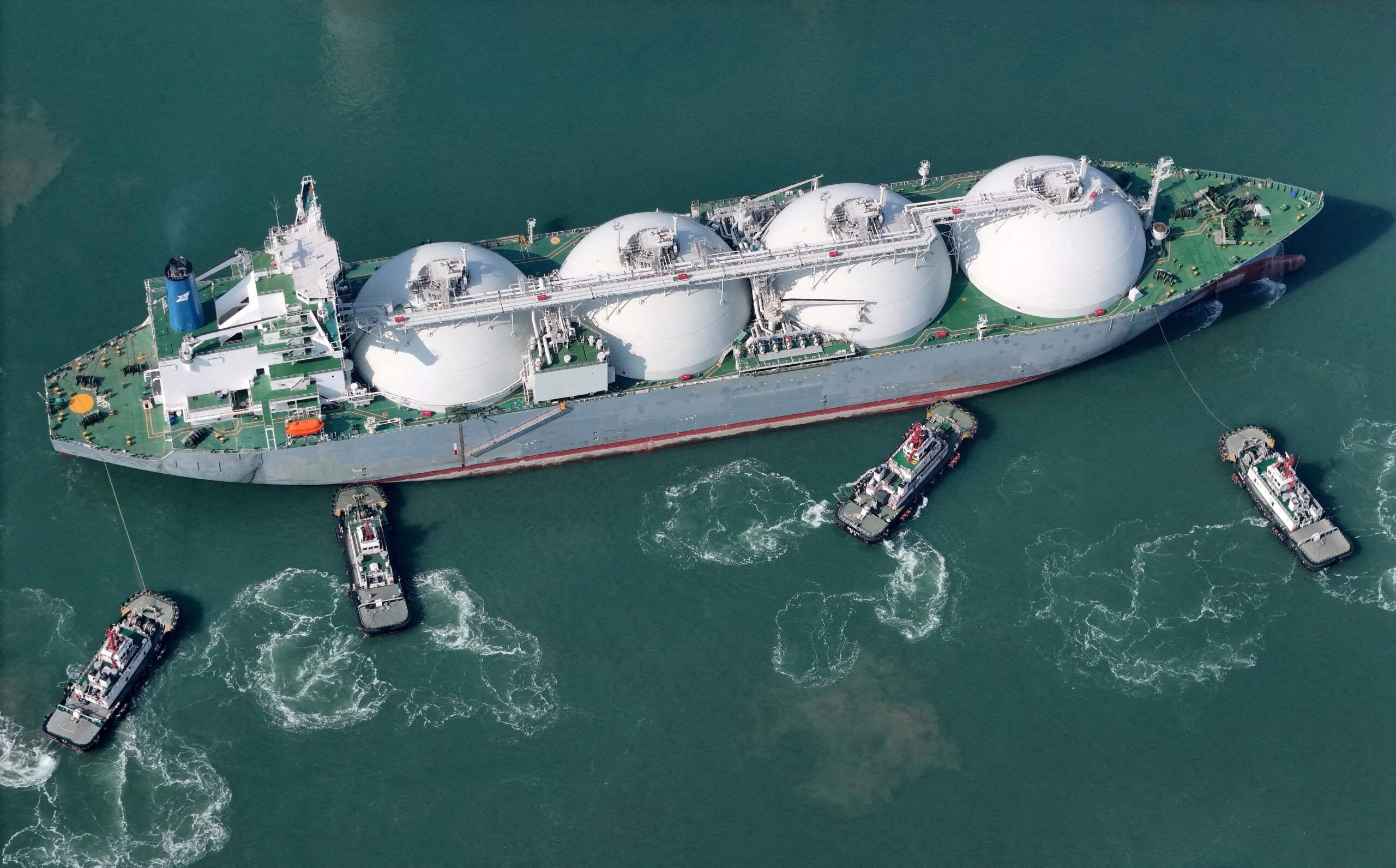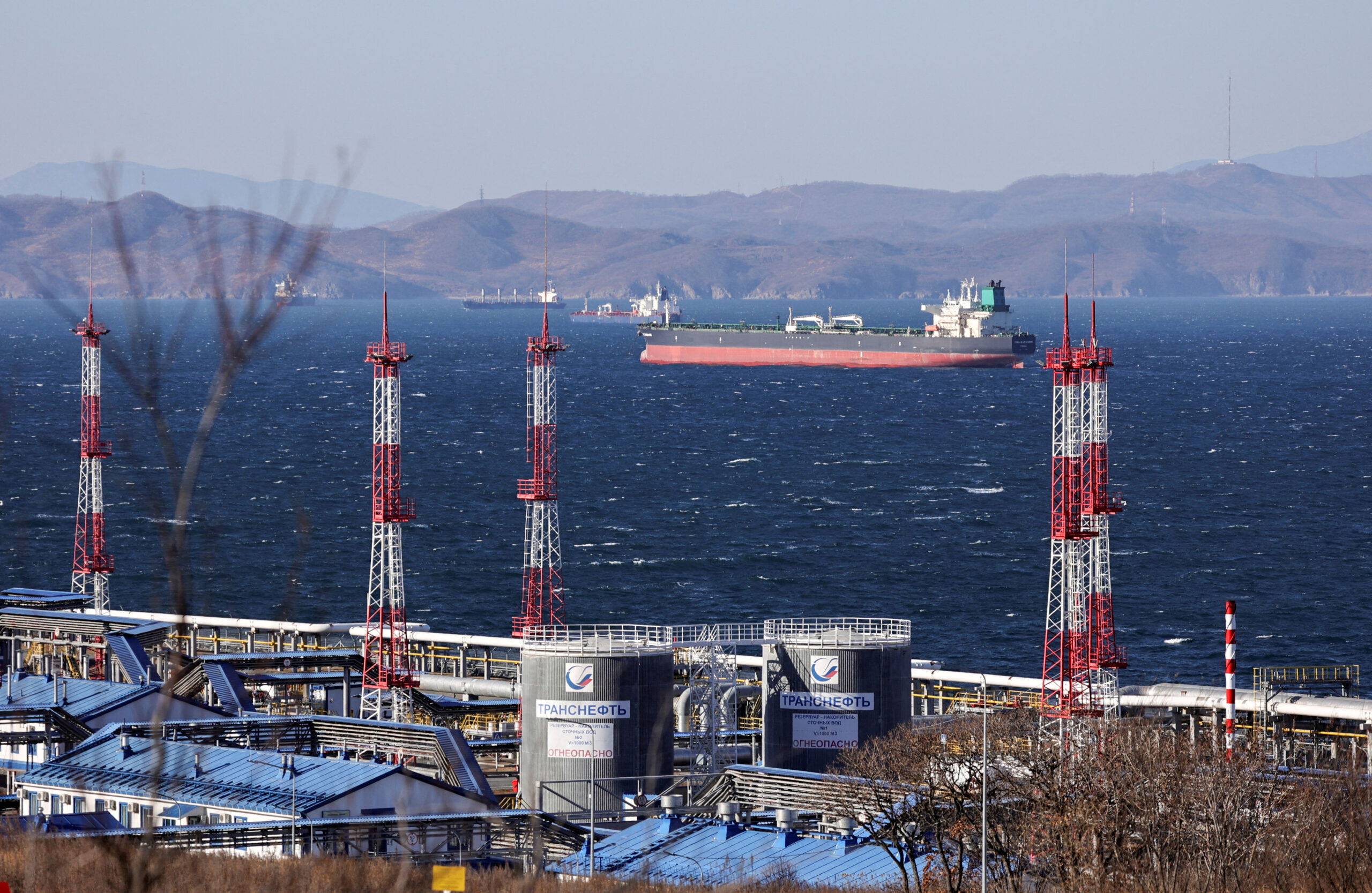By Julian Lee
Jan 7, 2025 (Bloomberg) –Russia’s seaborne crude exports slumped to the lowest level since August 2023, with the latest dip stretching the loss since an October peak to 540,000 barrels a day.
The drop in shipments over the two-and-a-half month period has been concentrated at ports in western Russia, and was accentuated by a decline in the number of cargoes leaving Ust-Luga since mid-December.
Crude flows through the port in the four weeks to Jan. 5 — the measure smooths out some of the volatility seen in shorter timeframes — were down by 25% from the period to Oct. 20. At least five cargoes appear to have been removed from the loading program in the last ten days of December, according to shipping information seen by Bloomberg. The slowdown has continued into January, with a partial program showing just five shipments in the first ten days. That’s half the number a month earlier.
Higher refinery runs reducing the volume of crude available for export are a possible reason for the slump in crude flows. Neither a short-lived unspecified incident at a pump station on the pipeline to Ust-Luga last month, nor a Ukrainian drone attack on the port at the weekend appears to have been significant enough to explain the drop.
Some crude may have been diverted to Russia’s Pacific port of Kozmino, which saw record shipments of 993,000 barrels a day last month. The port was due to receive crude delivered via the Gruzovaya railway station by the end of last year. That could boost flows by 7 million tons a year, or about 140,000 barrels a day.
The drop in shipments came after the OPEC+ group of oil producers, which Russia leads alongside Saudi Arabia, delayed for a third time their plan to start adding back some of the supply it has cut in recent years. Moscow will have to wait until at least April to enjoy a rising production target, though that could be postponed again amid expectations of oversupply.
Official figures show that Russia’s crude production in December was slightly below its OPEC+ target. The nation pumped 8.971 million barrels a day of crude last month, virtually unchanged from November, while its target output rose by 30,000 barrels a day with the end of compensation cuts it had pledged the previous month.
A total of 27 tankers loaded 20.17 million barrels of Russian crude in the week to Jan. 5, vessel-tracking data and port-agent reports show. The volume was down from 21.51 million barrels on 28 ships the previous week.
Daily crude flows in the week to Jan. 5 slumped by about 190,000 barrels to 2.88 million, reversing more than half of the previous week’s gain. The drop was driven by lower flows from the country’s Baltic and Arctic ports. Shipments also remained more than 25% down from their recent high.
Less volatile four-week average flows also fell, dropping for a third week to average 2.92 million barrels a day, down by 60,000 from the period to Dec. 29. On that measure, shipments have been on a downward trend since their recent peak in October, falling in eight of the 11 subsequent weeks.
Crude shipments in 2024 were about 80,000 barrels a day, or 2.5%, below the average for the whole of the previous year.
One cargo of Kazakhstan’s KEBCO crude was loaded at Ust-Luga on the Baltic Sea and three at Novorossiysk on the Black Sea during the week.
Russia terminated its export targets at the end of May, opting instead to restrict production, in line with its partners in the OPEC+ oil producers’ group. The country’s output target is set at 8.978 million barrels a day until the end of March, after a planned easing of some output cuts was delayed for a third time.
Moscow has also pledged to make deeper output cuts between March and September to compensate for pumping above its OPEC+ quota last year, although this schedule could be revised.
Export Value
The effect on the Kremlin’s oil income from the drop in flows was largely offset by an increase in the price of Russian crude. That resulted in the gross value of Moscow’s exports falling by about $20 million to $1.35 billion in the week to Jan. 5.
Export values at Baltic and Black Sea ports were up week-on-week by about $2.50 a barrel, while those for key Pacific grade ESPO rose by about $2.70 compared with the previous week. Delivered prices in India were up by about $1.80, all according to numbers from Argus Media.
Four-week average income slipped to about $1.33 billion a week, from $1.35 billion in the period to Dec. 29.
On this basis, the price of Russia’s shipments from the Baltic and Black Sea in the four weeks to Jan. 5 was down by about $0.80 a barrel from the period to Oct. 27. Prices for key Pacific grade ESPO were lower by about $0.30 a barrel.
Flows by Destination
Asia
Observed shipments to Russia’s Asian customers, including those showing no final destination, fell to 2.71 million barrels a day in the four weeks to Jan. 5. That’s about 19% below the average level seen during the most recent peak in April.
About 1.32 million barrels a day of crude were loaded onto tankers heading to China. The Asian nation’s seaborne imports are boosted by about 800,000 barrels a day of crude delivered from Russia by pipeline, either directly, or via Kazakhstan.
Flows on ships signaling destinations in India averaged 1.06 million barrels a day, down from 1.14 million for the period to Dec. 29.
The Indian figures, in particular, are likely to rise as the discharge ports become clear for vessels that are not currently showing final destinations. Most of those heading from Russia’s western ports through the Suez Canal end up in the south Asian nation.
The equivalent of about 260,000 barrels a day was on vessels signaling Port Said or Suez in Egypt. Those show up as “Unknown Asia” until a final destination becomes apparent.
The “Other Unknown” volumes, running at about 80,000 barrels a day in the four weeks to Jan. 5, are those on tankers showing no clear destination. Most originate from Russia’s western ports and go on to transit the Suez Canal, but some could end up in Turkey. Others may be moved from one vessel to another.
Europe and Turkey
Russia’s seaborne crude exports to European countries have ceased, with flows to Bulgaria halted at the end of last year. Moscow also lost about 500,000 barrels a day of pipeline exports to Poland and Germany at the start of 2023, when those countries stopped purchases.
Turkey is now the only short-haul market for shipments from Russia’s western ports, with flows in the 28 days to Jan. 5 up by 30,000 barrels a day to about 210,000 barrels a day from the period to Dec. 29.
NOTES
This story forms part of a weekly series tracking shipments of crude from Russian export terminals and the gross value of those flows. The next update will be on Tuesday, Jan. 14.
All figures exclude cargoes identified as Kazakhstan’s KEBCO grade. Those are shipments made by KazTransoil JSC that transit Russia for export through Novorossiysk and Ust-Luga and are not subject to European Union sanctions or a price cap. The Kazakh barrels are blended with crude of Russian origin to create a uniform export stream. Since Russia’s invasion of Ukraine, Kazakhstan has rebranded its cargoes to distinguish them from those shipped by Russian companies.
Vessel-tracking data are cross-checked against port agent reports as well as flows and ship movements reported by other information providers including Kpler and Vortexa Ltd.
If you are reading this story on the Bloomberg terminal, click for a link to a PDF file of four-week average flows from Russia to key destinations.
To contact the author of this story:
Julian Lee in London at [email protected]
© 2025 Bloomberg L.P.

 Join The Club
Join The Club











